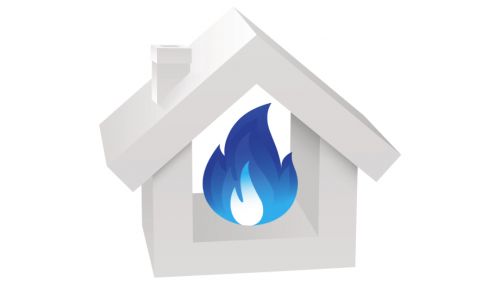All
Natural Gas Supply Into New England Appears to Max Out, Driving Gas Prices Higher
by Thomas Tubman, American Energy Coalition

On December 30th Con Edison, National Grid and Orange and Rockland Utilities, Inc. (O&R) all notified their “interruptible customers” that they needed to stop burning natural gas on January 3rd, 2014 due to a forecasted cold air mass expected to envelop the Northeast on that day, and linger for several days.
A few days later, as the weather moderated and temperatures warmed, the utilities notified their interruptible customers that they could begin to burn gas again. Con Edison and National Grid had taken similar steps the previous winter when the temperature dropped below 20 degrees
and remained there for a few days, but neither this winter’s service interruption nor last year’s drew any press coverage of consequence.
Too Cold for Service?
Service interruption has been common practice over the years, and utilities do this because they know the limitations of their distribution systems and the interstate transmission lines that bring the fuel to the region to feed their systems. As the weather gets colder, higher volumes of gas are consumed for space heating and electric power generation. The general rule of thumb over the years has been 20 degree outside temperature and below is the point where they max out their ability to supply all of their customers.
So to address this supply limitation, the utilities’ have created a “class” of customer, with the ability to “change over” to an alternate fuel (usually fuel oil). The utilities can “shut off” these customers when needed and divert their available natural gas to other customers.
The quid pro quo here is that the utilities offer to sell these “interruptible customers” natural gas at a discounted rate, during relatively warmer outdoor temperature conditions, if the customer agrees to stop burning gas when notified by the utility to do so. Interruptible customers are usually larger volume commercial accounts like apartment buildings, hospitals and schools. Many commercial industrial burner manufacturers offer an “Automatic Temperature Changeover” option that includes an outdoor sensor, specifically designed for this type of interruptible application.
Supply Limitations
This may sound like a reasonable business model, but it points out two very inconvenient facts that the utilities don’t like to talk about. The first inconvenient fact is that the natural gas infrastructure is already limited and cannot reliably supply their customer base if the temperature falls below 20 degrees for any extended period of time.
I will return to this point later, as it has important implications for both the Oilheat Industry as a whole and states promoting natural gas expansion initiatives. The second inconvenient fact is that the utilities need to be able to shut off these “interruptible customers,” and without that option they simply could not reliably supply all their customers during cold weather periods.
Since the most common alternate fuel consumed by these interruptible accounts when told to stop burning gas is fuel oil, the utilities are in effect transferring the burden of their limited ability to supply their customers onto the heating oil market, and at a time when Oilheat too is experiencing higher than normal demand from its own customer base.
Oftentimes this causes the price of fuel oil to spike and can even strain the entire oil heat supply chain. So oil heat customers can see higher prices during these events driven mainly by the additional demand created by the need to supply interruptible gas customers at a time of already high demand for fuel oil. I would suggest to you that this is unfair to retailers and especially unfair to loyal oil heat customers and shouldn’t be allowed by utility regulators.
Status Quo Is Unsustainable
With the plentiful supply of natural gas here in the United States, others have pointed out this limited ability to move that gas to where it is needed during periods of high consumption. ISO New England’s CEO, Gordon van Welie, testified before a U.S. House of Representatives subcommittee in March 2013, saying that “the status quo is unsustainable.”
American Energy Coalition (AEC) reported on this in a March 20, 2013 E-Alert entitled “Grid Chief Warns of Future NE Power Problems.” Van Welie also noted that during the February 2013 blizzard and resultant widespread power outages a month earlier “6,000 megawatts of electricity, about a fifth of the region’s total capacity, wasn’t available, in part because gas generators couldn’t find [gas].”
Another ISO New England spokesperson, Marcia Blomberg said the organization was in the midst of a major study to determine if the region’s power grid has become too reliant on natural gas. AEC reported on this in a July 17, 2013 E-Alert entitled “New England’s Love Affair With Natural Gas Cools.” In that same story, van Welie was quoted as telling the U.S. Senate Energy and Natural Resources Committee that, “We are very close to the edge of reliability in very poor weather circumstances.”
In a September 6, 2013 E-Alert entitled “Vermont Yankee Shutdown Makes New England Too Dependent on Natural Gas,” AEC reported on an article from The Republican announcing the closing of the Vermont Yankee nuclear power plant and a smaller coal fired plant, Mount Tom Power Station, in Holyoke MA.
Oversubscribed Pipelines
In that article Westfield Gas & Electric general manager Daniel Howard said that, “The pipelines are oversubscribed during these peak periods.” Noting that natural gas prices had doubled in a year, Howard said, “All that gets passed on to the power generators and residential gas [and electric] customers.” Howard was quoted in another article from The Republican on the Vermont Yankee shutdown, saying that, “It’s not something that is going to fix itself.”
In a September 21, 2013 E-Alert entitled “With Natural Gas Supplies Squeezed, Prices Will Be Volatile In New England,” AEC reported on comments by Holyoke Gas & Electric general manager James Lavelle echoing Howard’s comments on how this pipeline shortage is driving spikes in the price of natural gas.
That same article quoted U.S. Energy Information Agency data showing that electric generation in New England using natural gas has increased from 30 percent in 2001 to 52 percent today, adding to the pipeline capacity problem.
Also noted was the planned closure of the Vermont Yankee Nuclear Power Plant that produces 620 megawatts of power, some 20 percent of New England’s total usage, which will further add to the natural gas dependency in N.E. An October 27, 2013 Boston Business Journal article reported that natural gas prices were expected to increase 18 percent between November and April this winter due to the pipeline capacity shortcomings.
In a more recent article in the Hartford Courant and reported by AEC in a December 18, 2013 E-Alert entitled “Electricity Prices To Jump Due To Natural Gas Concerns,” the Courant reported that, “A shortage of capacity in natural gas pipelines serving the Northeast is driving electric rates up throughout southern New England. In Massachusetts, rates will increase by as much as 38 percent, while customers in Rhode Island and Connecticut can expect increases of 27 percent and 20 percent respectively.”
Why Add Customers?
Remember that first “inconvenient fact” I mentioned earlier and promised to return to: namely that the natural gas infrastructure is already limited and cannot reliably supply their customer base if the temperature falls below 20 degrees for any extended period of time? Well, with dozens sounding the alarm relative to inadequate interstate transmission pipeline capacity, and that “under-capacity” status driving gas prices up at double digit rates in New England, why are New England state governments, state utility regulators and the gas utilities themselves advocating for natural gas pipeline expansions within their states when they don’t have enough capacity at their City Gates to supply their current customers, never mind the new customers they want to add?
I don’t have an answer to that question, but the oil heat industry needs to get this message out and have its voices heard on this subject. NEFI (New England Fuel Institute) President Michael Trunzo recently authored a letter to the editor on this subject of inadequate pipeline capacity and went on to talk about a number of other issues, including: price, environmental concerns, the cost of pipeline leaks, safety concerns, etc.
It is a great piece. AEC, for its part, has issued dozens of E-Alerts also speaking to these same issues and concerns. Those E-Alerts are archived on AEC’s website americanenergycoalition.org under the “News” tab, and I urge you to visit the website and learn more.
And then there is that second inconvenient fact that the gas utilities need the ability to shut off the interruptible customers, and without that they simply could not reliably supply all their customers during cold weather periods. Well, with capacity maxed out, as the utilities add new customers, don’t they also need to add more interruptible customers? And don’t they need to add them, therm for therm? That is one therm of interruptible customer for every one therm of new customer? Oh, but that only shifts more supply responsibility to oil heat. Should regulators just eliminate the interruptible customer option altogether?
Please visit the AEC website, and get the facts. Then talk with your customers, neighbors, relatives and especially your elected officials and public policy makers, and urge them to act responsibly. Our industry depends upon it.
Not only are we losing customers to gas conversions, but when it gets cold, oil heat is asked to bail out the very competitor that is taking our customers through gas conversions. Instead of states advocating pipeline expansions and conversions from oil to gas, maybe the states should be placing a moratorium on any more gas conversions until the utilities get their act together and secure sufficient supply lines for their existing customer base.
To receive AEC’s weekly E-Alerts, send your e-mail address to info@americanenergycoalition.org.
Related Posts
 The Possibilities of Renewable Propane
The Possibilities of Renewable Propane
Posted on March 13, 2024
 Propane Can Do That
Propane Can Do That
Posted on March 12, 2024
 Take Action and Take Control of Your Future at Industry Summit VI and Visions ‘24
Take Action and Take Control of Your Future at Industry Summit VI and Visions ‘24
Posted on March 11, 2024
Enter your email to receive important news and article updates.

